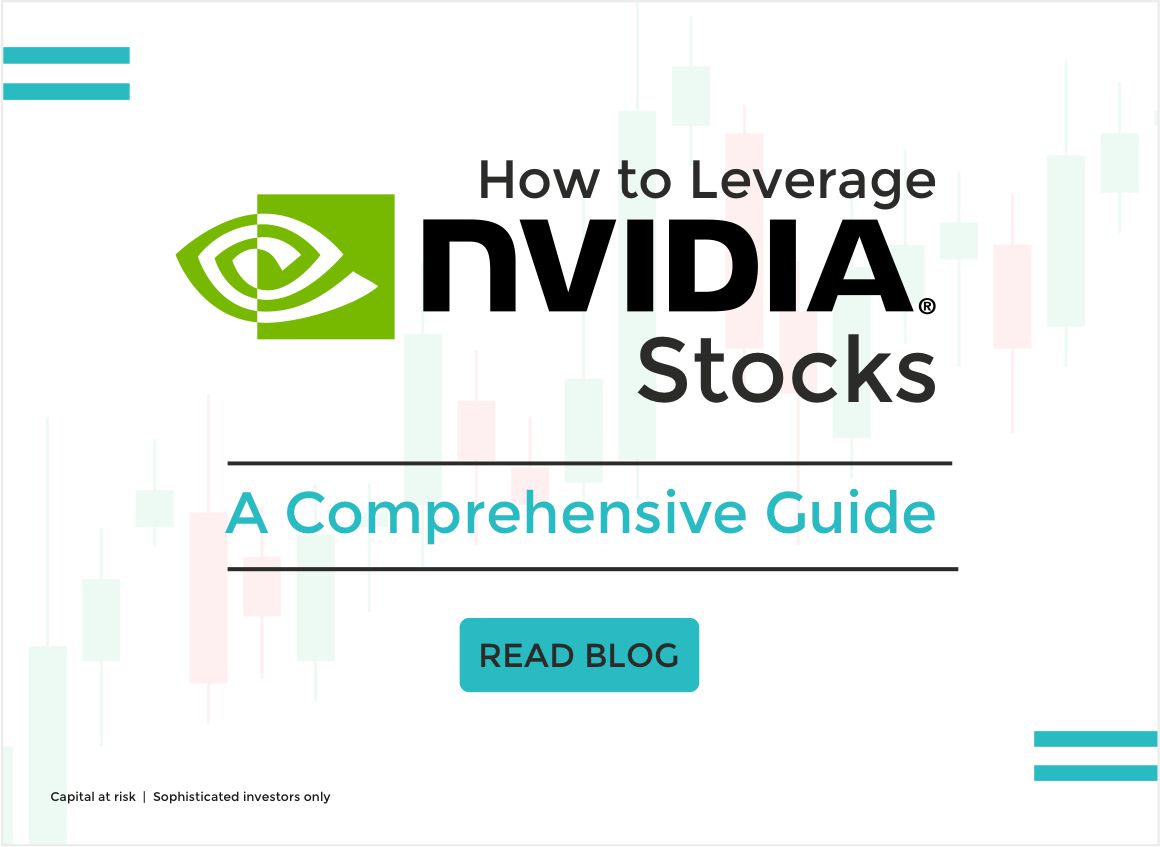Navigating NVIDIA Stock: Strategies for Leveraging
Posted:
How to Leverage NVIDIA Stock
NVIDIA is located in Santa Clara, United States. The company invents the GPU and drives advances in AI, HPC, gaming, creative design, autonomous vehicles, and robotics. NVIDIA is a dominant developer and supplier of artificial intelligence software and hardware.
The company functions under segments Compute & Networking segment and Graphics Segment. The Compute & Networking segment includes Data Centre Accelerated Computing Platforms, Autonomous Vehicle Solutions, Networking, and Autonomous Driving Development Agreements. The company also includes Electric Vehicle Computing Platforms, Jetson for Robotics and Other Embedded Platforms, NVIDIA AI Enterprise and Other Software, and Cryptocurrency Mining Processors (CMP).
The Graphics Segment of the company includes GeForce GPUs for gaming and PCs, the GeForce NOW game streaming service and related infrastructure, solutions for gaming platforms; virtual GPU (vGPU), Quadro/NVIDIA RTX GPUs for enterprise workstation graphics; software for cloud-based visual and automotive platforms for infotainment systems; virtual computing; omniverse enterprise software for developing and operating metaverse and three-dimensional Internet applications.
In this article, we will explore various what are leverage and various leverage instruments that investors can consider when looking to capitalize on NVIDIA stock.
Understanding Leverage Instruments: Exploring Options for Leveraging NVIDIA Stock
Leveraging allows investors to amplify their exposure to the stock, potentially magnifying their returns. However, it's essential to understand the different leverage instruments available and the associated benefits and risks. Here are various financial leverage instruments that investors can use to capitalize on NVIDIA stock.
Options Trading:
Options give you the right, but not the obligation, to buy or sell an underlying asset at a predetermined price (strike price) within a specific timeframe. Options can be used to create leveraged positions with limited risk by using hedging strategies like buying call or put options or more complex strategies like spreads and straddles. The problem with option trading it the cost of trading this instrument is comparative on a higher end. Also, the inherent risk of leverage instrument.
Contracts for Difference (CFDs):
CFDs are derivative products that allow traders to speculate on the price movements of various financial instruments without owning the underlying asset. CFDs offer leverage, enabling traders to open larger positions with a smaller initial capital outlay. However, CFD trading also carries significant risks due to the potential for magnified losses and transaction costs.
Leveraged Forex Trading:
The foreign exchange (forex) market provides opportunities for leveraged trading. Forex brokers often offer leverage ratios that allow traders to control larger positions with a smaller amount of capital. However, trading forex with leverage carries substantial risk due to the volatility of currency market fluctuation.
Leveraged Equity Trading:
Some brokers and platforms offer leveraged trading on individual stocks. This allows traders to control a larger position in a particular stock with a smaller amount of capital. However, it's important to note that leveraged equity trading involves additional risks and requires careful risk management. For example, Investor trades NVIDIA Stock through leveraged trading with a margin loan of 50%, which means you only need to put up 50% of your own money to buy the shares.
Leveraged Certificates:
Leveraged certificates are structured financial products that provide leveraged exposure to an underlying asset, such as an index or commodity. These instruments are issued by financial institutions and are designed to replicate the performance of the underlying asset with leverage.
Exchange Traded Products (ETPs):
ETPs are exchange-listed investment vehicles. They are the type of securities that are designed to track the underlying security, an index, or other financial instruments. These are leveraged instruments. Leveraged ETPs can be used to bet on the direction of the market, or to hedge against losses. There are two main types of leveraged ETPs: Leverage and short. Long-leveraged ETPs seek to provide a multiple of the daily returns of the underlying asset or index, while short-leveraged ETPs seek to provide the opposite of the daily returns. Leveraged ETPs are typically used by traders who want to take advantage of short-term market movements. However, they can also be used by investors who want to reduce their risk by hedging against losses. For example, 3x NVIDIA leveraged ETP.
Let's explore the potential advantages of leveraging investment in NVIDIA stock:
Increased Potential Returns:
One of the primary benefits of leverage is the potential to amplify returns on investment in NVIDIA stock. By using leverage, investors can control a larger position in the stock than they would be able to with their available capital alone. If the stock price appreciates, the gains can be magnified due to the increased exposure. Leveraged instruments might have given amplified results in the part but its future performance will not be based on that. Investors need to be vigilant.
Enhanced Profit Opportunities:
Leverage can provide investors with the ability to take advantage of short-term profit opportunities in NVIDIA stock. For instance, if an investor anticipates a short-term price increase, leveraging the investment can potentially maximize the gains during that period. It allows investors to capitalize on market movements without having to commit the full capital upfront.
Access to a Larger Investment Universe:
Leverage can expand an investor's access to a larger investment universe by enabling them to participate in opportunities that may require a larger capital commitment. By leveraging their investment in NVIDIA stock, investors can potentially diversify their portfolios across various assets and sectors, increasing their overall investment opportunities.
Risk Considerations: Evaluating the Potential Downsides of Leveraging NVIDIA Stock
Choosing the Right Leverage Instrument: Factors to Consider for Leveraging NVIDIA Stock Leveraging investment in NVIDIA stock can offer the potential for increased returns and amplified gains. However, it's crucial to fully understand and evaluate the potential downsides and risks associated with leveraging. While leveraging can enhance profitability, it also introduces additional complexities and exposes investors to heightened risks. Let's explore the risk associated with leveraging a stock.
Market Volatility:
One of the key risks of leveraging any investment, including NVIDIA stock, is market volatility. Stock prices can fluctuate significantly in response to economic conditions, industry trends, or company-specific factors. When leveraging, the impact of market volatility is magnified, potentially leading to larger losses if the stock price declines.
Amplified Losses:
While leveraging can amplify gains, it also amplifies losses. If the value of NVIDIA stock declines, the leveraged investment can incur greater losses compared to an unleveraged investment. It's essential to carefully assess your risk tolerance and financial capacity to absorb potential losses before considering leveraging strategies.
Timing and Duration of Leverage:
Timing and duration play a critical role when leveraging investments. If the leverage is employed during a market downturn or when the stock price is already at an elevated level, it can increase the potential for losses. Moreover, the duration of the leverage should align with your investment goals and time horizon. Leveraging over an extended period may expose investors to additional risks as market conditions and circumstances change.
Conclusion:
In conclusion, leveraging NVIDIA stock requires a comprehensive understanding of the company's technologies, market trends, and financial performance. NVIDIA's position as a leading technology company, with its innovative GPUs and advancements in AI and data centres, presents promising opportunities for investors. By analyzing key subtopics such as fundamental analysis, market trends, strategic partnerships, and investor sentiment, investors can make well-informed decisions aligned with their investment goals.
However, it's important to acknowledge the inherent risks associated with investing in stocks and to conduct thorough research or seek professional advice before making any investment decisions. With a strategic approach and careful consideration of relevant factors, investors can potentially leverage NVIDIA stock to capitalize on its growth and contribute to their investment portfolios.
NVIDIA ETPs by GraniteShares
| Product name | Ticker | ||
|---|---|---|---|
| USD | EUR | GBX | |
DISCLAIMER
This is a disclaimer stating that all trading and investing comes with risks. Always do your research and do not invest more than you can afford to spend.
GraniteShares accepts no responsibility for any loss or damage resulting directly or indirectly from the use of this blog or the contents.
This blog does not constitute an offer to buy or sell or a solicitation of an offer to buy securities in any company. Nothing contained herein constitutes investment, legal, tax or other advice nor is to be relied upon in making an investment or other decision. No recommendation is made positive or otherwise, regarding individual securities or investments mentioned herein. Any summary list of risk factors does not purport to be a complete enumeration or explanation of the risks involved in a particular investment. Prospective clients must consult with their own legal, tax and financial advisers before deciding to invest. This email contains the opinions of the author and such opinions are subject to change without notice. The source of data is GraniteShares unless otherwise stated. No guarantee is made to the accuracy of the information provided which has been obtained from sources believed to be reliable. This email and the information contained herein is intended only for the use of persons (or entities they represent) to whom it has been provided. Past performance is not a reliable indicator of future results. The value of an investment may go down as well as up and can result in losses, up to and including a total loss of the amount initially invested. Investments may involve numerous risks including, among others, company risks, general market risks, credit risks, foreign exchange risks, interest rate risks, geopolitical risks and liquidity risks. Please note that GraniteShares short and leveraged Exchange Traded Products are for sophisticated investors.


